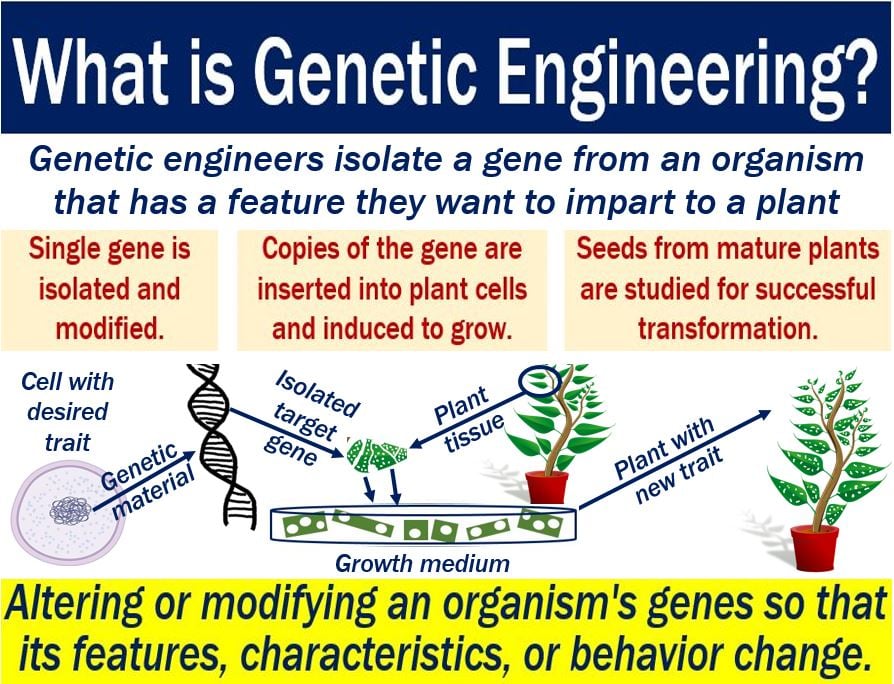The Role of Genetic Engineering in India
Context:
To ensure global food and nutritional security, the adoption of science-based technologies like genetic engineering has become the need of the hour, complementing traditional breeding methods.
- According to the global Food Security and Nutrition Report, 2019, it is difficult to achieve the ‘Zero Hunger’ target by 2030. Hence, the importance has to be towards accelerating the speed of GM crops.
Relevance:
GS- 02, GS- 03 (Government Policies & Interventions, Biotechnology)
Prelims:
- GM crops
Mains Question:
The environmental release of GM mustard DMH-11 marks a new era in self-reliance and sustainability in agriculture. Comment (10 marks)
Dimensions of the Article:
- The Significance of Genetic Modification
- The Edible Oil Challenge
- The Way for Self-Reliance
The Significance of Genetic Modification:
- Genetic modification (GM) of crops stands as a well-documented approach to enhance productivity, contributing to global food, feed, and fiber security. According to the 2020 report from the International Service for the Acquisition of Agri-biotech Applications (ISAAA), 72 countries have embraced GM crops, using them for human consumption, animal feed, and commercial cultivation.
- 56% of the global GM crop area resides in developing countries, with 44% in industrialized nations.
- GM crops have positively impacted the lives of over 1.95 billion people in five countries, including Argentina, Brazil, Canada, India, and the United States, representing 26% of the world’s population.
- India’s journey with GM crops began over two decades ago with Bt cotton, recognized globally as a success story for its economic benefits to farmers and the nation. Over the years, the application of genetic modification has expanded beyond the major four crops (maize, soybean, cotton, and canola) to encompass other vital food crops. These crops are tailored to exhibit traits such as resistance to pests and herbicides, resilience to changing climates, and improved nutritional value.
- GM crops have significantly contributed to the global economy, generating $224.9 billion in economic benefits from 1996 to 2018. These benefits have primarily enriched the livelihoods of more than 16 million farmers, the majority of whom hail from developing countries. Over the last quarter-century, GM food crops have demonstrated their biosafety.
The Edible Oil Challenge:
- India grapples with a considerable deficit in edible oil production, with imports satisfying 60% of the nation’s demand. Mustard, a critical oilseed crop in India, lags in terms of per-hectare yield when compared to global averages. Consequently, enhancing mustard productivity holds the key to improving farmers’ economic well-being and achieving self-sufficiency in edible oil production.
- To boost mustard production, extensive genetic engineering research has been undertaken at the Centre for Genetic Manipulation of Crop Plants (CGMCP), University of Delhi South Campus. This research has led to the creation of a genetically modified (GM) mustard hybrid known as DMH-11.
- The GM mustard hybrid leverages the barnase/barstar system, a genetic strategy that selectively disrupts male fertility in one parent and restores it in the offspring.
- The hybrid incorporates herbicide tolerance genes as selection markers. While herbicide-tolerant (HT) crops offer advantages such as water and nutrient conservation, efficient weed control, and improved soil quality, the herbicide tolerance gene in GM mustard serves primarily as a tool for identifying genetically modified lines and facilitating hybrid seed production.
The Way for Self-Reliance:
- On October 25, 2022, the GEAC under the Ministry of Environment, Forest, and Climate Change gave approval for the cultivation of DMH-11 and its parental line.
- This approval marked a significant milestone in advancing genetic engineering research within the country. As existing mustard varieties in India possess limited genetic diversity, GEAC’s decision to permit barnase-barstar-based hybrid production in mustard paves the way for developing mustard hybrids with improved yield, disease resistance, and oil quality.
- DMH-11 promises to benefit farmers by increasing per-hectare yields and subsequently boosting their incomes.
Conclusion:
- The cultivation of these indigenously developed GM mustard hybrids has the potential to enhance farmers’ incomes, reduce the burden of oil imports, and contribute to much-needed self-reliance in edible oil production.





